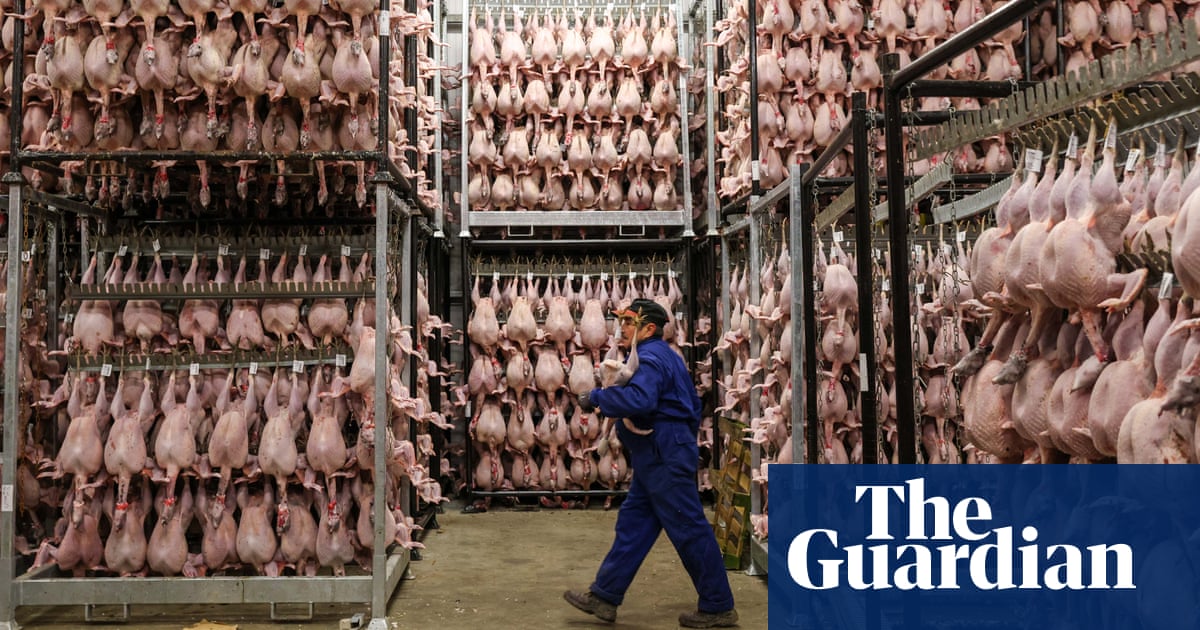
Meat bacteria are the likely cause of over half a million urinary tract infections (UTIs) in the US every year, a new study has found, with one of its authors warning that deaths from UTI-driven bloodstream infections could be on the rise.
The study found that of the 6-8m UTIs caused by E coli bacteria in the US every year, between 480,000 and 640,000 could be linked to strains known as FZECs, or food-borne zoonotic E coli. Women are far more likely than men to suffer from UTIs. The British Society for Antimicrobial Chemotherapy (BSAC) estimates that about half of all women in the UK will have at least one UTI in their lifetime.
“People are carrying the strain of E coli that causes the UTI in their gut, so the bacteria has travelled from the anus [into the urinary tract to cause the infection],” said Lance Price, one of the study’s authors and a professor specialising in antibiotic resistance at the George Washington University’s Milken Institute School of Public Health in Washington DC.
However, he added: “Our question was: how did the E coli that caused the UTI get into the gut in the first place?” Whether the food-borne E coli are found on plant or meat products, their source is generally livestock, Price said.
While UTIs are often considered no more than a painful annoyance, Price said the bladder can act as a gateway to the bloodstream for E coli, via the kidneys, causing much greater risks. In the US, E coli bloodstream infections kill between 36,000 and 40,000 people every year. In the UK, BSAC describes UTIs as “the leading source of bacterial bloodstream infections” and a “chronically neglected area of infectious diseases”.
Price warned that as E coli, already resistant to some antibiotic treatments, became resistant to more antibiotics, the number of people dying from bloodstream infections could rise. Reducing UTIs caused by meat-borne E coli strains would help reduce those deaths, he said.
For many people, Price said, the link between UTIs and meat was not “as intuitive” as other meat-related illnesses, mainly because there can be a long delay between the bacteria entering the body and a person developing a UTI.
Working in the small US town of Flagstaff, Arizona, Price and his team spent a year matching the UTI-causing E coli found in patients attending the local hospital, to that of E coli found in turkey, chicken and pork products sold in the area. The meats were chosen because they had been identified as most likely to carry the E coli that cause UTIs.
“Flagstaff was the perfect place,” he said. “We could go to the shops, buy the meat and then go to the local hospital and get all the UTI E coli samples and compare them.” The study used 1,188 human clinical urine and blood isolates taken at the hospital.
“At the end of the year we sequenced the E coli we’d collected, and because I learned that E coli adapt to different hosts – people, chickens, whatever – by pulling in packets of DNA, we could look at the DNA packets and work out their statistical relation to each host … [and then] we could estimate the proportion of UTI E coli coming from food animals.”
The Flagstaff study showed that 8% of the UTIs were caused by E coli from local meat samples. That, said Price, translates into a national figure in the US of 480,000 to 640,000 UTIs caused by E coli originating from those meats.
Asked about links between industrial farming and UTI-causing E coli found in meat, Price said the high densities of animals in indoor sheds had probably helped spread the risk of infection. “When you are packing animals together very tightly, pigs or poultry, and buying them from same breeder, yes, the dangerous strain of E coli is going to spread very quickly.”
The strains spread between the animals would also have the opportunity “to develop new characteristics that could cause worse disease and be more resistant to antibiotics”, he added.
One solution proposed by Price and his team is inoculating animals against the most dangerous strains of E coli to prevent the bacteria from entering the food chain in the first place. For poultry the vaccination could be at the egg stage.
Other routes would be limiting contact with meat products – and also following existing public health food preparation guidelines. These recommend workers wash their hands frequently and use different knives and chopping boards for meat products and for fruit and vegetables.
Although Price and his team found that some of the meat-borne UTI-causing E coli were resistant to antibiotic treatment – with 11% not responding to a trimethoprim sulfamethoxazole combination often used to treat UTIs – he said this was not a significant discovery as many E coli are already known to be antibiotic resistant in the US.
“In other countries, that might be different, though,” Price said. His next goal is to use the team’s methodology to look at antibiotic resistance to meat-borne E coli in other countries. Another study is already under way to examine the presence of UTI-causing E coli in beef.












